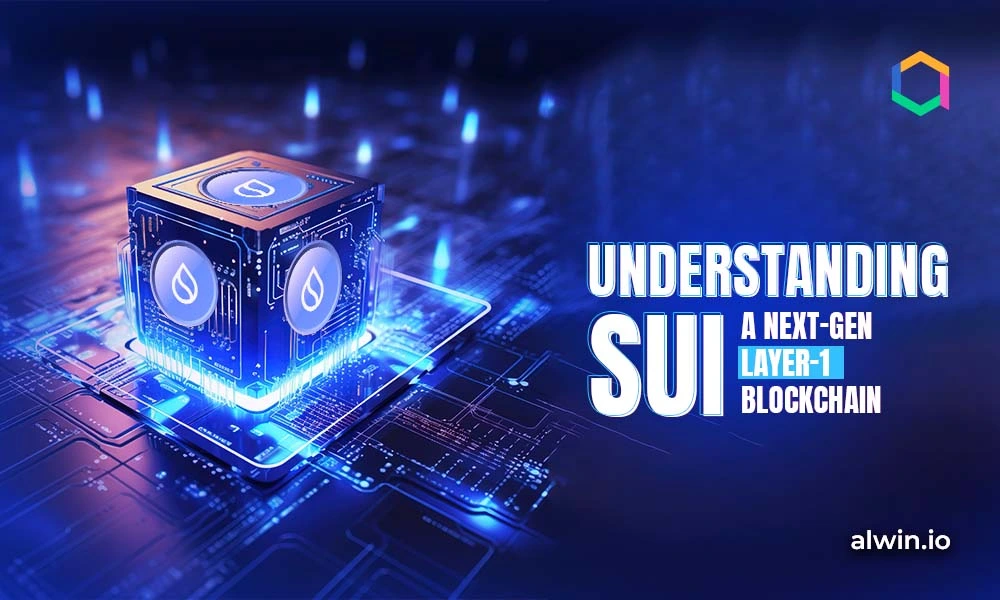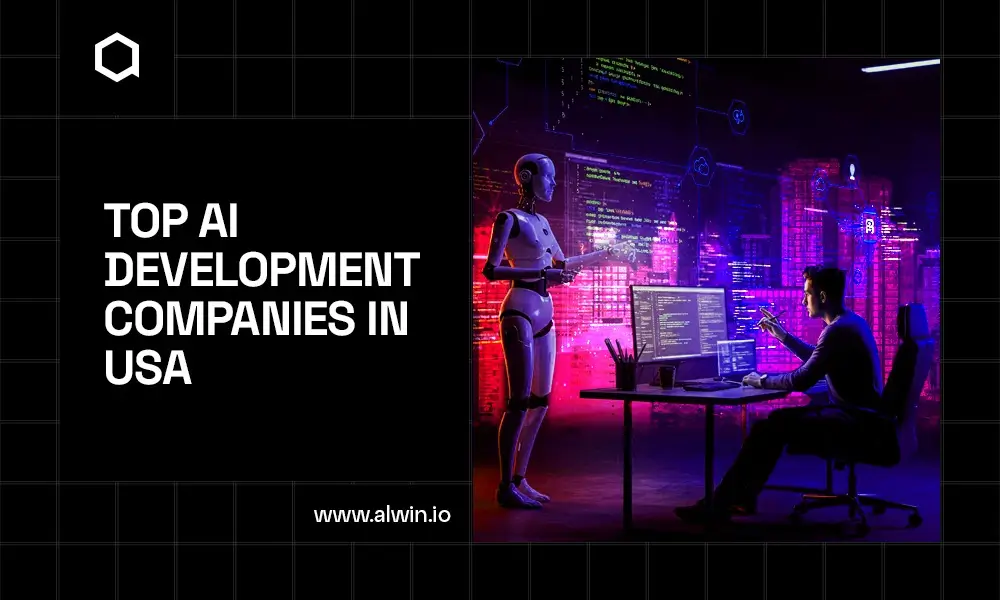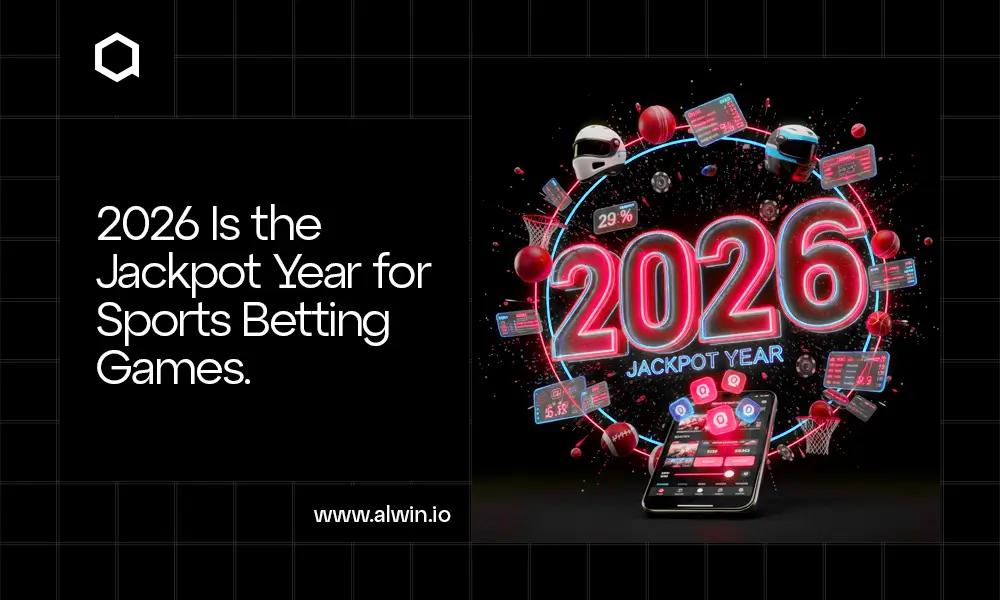What Is SUI Blockchain?
SUI Blockchain is a layer-1 platform built to address key challenges in blockchain performance. As a layer-1 blockchain, SUI serves as the core infrastructure for a decentralized network, setting the rules, security measures, and solutions from the ground up. Designed to handle high transaction volumes without slowing down, SUI eliminates bottlenecks that typically occur when too many transactions are processed at once, ensuring smooth and reliable performance even during periods of heavy network activity.
SUI offers a powerful foundation for businesses looking to create decentralized applications (DApps). Its speed, efficiency, and reliability make it ideal for building robust, high-performance solutions.
What is Unique In SUI Blockchain?
One of SUI Blockchain’s standout features is its ability to process transactions in parallel, making it particularly distinctive in the blockchain space. Most blockchains process transactions in sequence, where each transaction must wait for the one before it is completed, resulting in limited throughput and delays under high transaction volumes.
This unique approach to handling transactions means that as transaction volumes increase, SUI’s performance remains strong, allowing it to maintain low latency and high throughput consistently. By using parallel processing, SUI builds a blockchain network that can support large-scale applications, from financial services to complex gaming ecosystems. We’ll explore how SUI’s innovative structure makes this possible and why it’s a major advancement for blockchain technology.
How Does SUI Blockchain Work?
SUI Blockchain stands out from traditional blockchains by using a unique way to process transactions and reach agreements. Traditional blockchains require all transactions to be added one after another, which can slow things down as the network gets busier. This process limits the speed at which transactions can happen.
SUI solves this by allowing many transactions to happen at the same time. It looks at data in a way that doesn’t require every transaction to be checked by every node in the network. Instead, SUI uses a method where data is stored around “objects” (like coins, NFTs, or other assets) rather than accounts, making it easier to process transactions quickly.
Here’s how the process works:
- Broadcast: The sender sends a transaction to all validators.
- Validation: Validators check the transaction for validity and cast votes based on how much they’re invested.
- Majority Decision: Once enough validators agree, the transaction is confirmed and sent back to the network.
This process lets SUI handle up to 100,000 transactions per second. SUI also uses three types of asset ownership:
- Owned by an address (like coins or NFTs)
- Owned by another object (like an NFT inside another NFT)
- Shared ownership (like liquidity pools in decentralized finance)
Transactions with shared objects need to be ordered, but those with individual objects can happen nearly instantly. This fast processing makes SUI perfect for industries like NFTs, gaming, social media, and decentralized identity apps, offering the performance of traditional Web2 systems but with the benefits of Web3 technology.
What Makes SUI Blockchain Unique?
Speed and Parallel Processing: With parallel transaction processing, SUI can handle a high volume of transactions per second (TPS) while maintaining low latency. This efficiency is crucial for real-time applications, such as decentralized finance (DeFi) and blockchain gaming, where delays are unacceptable.
Security and Finality: By combining Narwhal and Bullshark, SUI ensures that data availability and transaction order remain intact, even under heavy load. The consensus structure allows for rapid finality without risking security, meaning that transactions are processed and finalized quickly, with minimal room for manipulation.
Long-Term Scalability: SUI’s unique architecture is built to handle large-scale growth. As the network expands, the parallel processing model and object-centric design will continue to support high TPS rates without sacrificing performance, offering a sustainable solution to blockchain scalability.
These optimizations make SUI a powerful blockchain that meets the demands of high-speed, secure, and scalable DApps, positioning it as a strong competitor in the evolving blockchain landscape. Each component of SUI’s architecture works cohesively to provide a network built for the future.
Is SUI the Next Solana?
Comparison of SUI and Solana’s Architectures
SUI and Solana are both built with scalability in mind, aiming to support high-performance applications by handling a significant volume of transactions. However, they achieve this through distinct architectural approaches.
Where SUI Shines: SUI’s parallel processing and object-centric model make it especially suitable for applications that require high transaction throughput without dependence on centralized components. This makes it ideal for decentralized finance (DeFi) platforms, blockchain-based gaming, and any application needing real-time interactions. SUI’s structure also minimizes latency in large-scale environments, making it a strong choice for DApps with complex interactions.
Where Solana Excels: Solana’s ecosystem has gained a foothold in the decentralized finance and NFT space due to its established network and high throughput. Solana’s extensive support and adoption have attracted a broad range of applications, from DApps to large marketplaces, providing a proven environment for developers. Solana may also offer advantages in projects requiring low fees and established toolsets.
While SUI introduces new methods for transaction handling and performance, Solana’s established ecosystem and history of rapid development make it a strong platform for many. SUI’s approach to parallel processing offers potential for projects that require maximum efficiency, while Solana’s infrastructure and proven consensus model continue to make it a solid option for diverse applications. As SUI’s network matures, it could become a strong alternative to Solana, especially for applications with high throughput and performance demands.
Is SUI a Good Investment?
SUI offers a better approach to transaction handling, making it an appealing choice for developers and businesses.
Developer Appeal: The Move programming language emphasizes security and ease of use, attracting developers in areas like decentralized finance (DeFi) and gaming.
Enterprise Applications: SUI’s architecture allows for rapid transaction processing, making it suitable for real-time applications without relying on heavy infrastructure.
Potential Risks: As a newer network, SUI's success hinges on developer and business adoption, as well as competition from established blockchains like Solana and Ethereum.
How to Acquire SUI Tokens and Get Involved?
To engage with the SUI blockchain, the first step is acquiring SUI tokens, which are essential for transactions and participation in the ecosystem. Here’s how you can do that:
Choose a Cryptocurrency Exchange: Start by selecting a reputable cryptocurrency exchange that supports SUI tokens. Popular exchanges may include platforms like Binance, KuCoin, or others that have listed SUI.
Create an Account: Sign up on the chosen exchange. This process typically involves providing some personal information and verifying your identity.
Deposit Funds: Once your account is set up, deposit funds using fiat currency or other cryptocurrencies. Ensure you understand the exchange’s deposit process and any associated fees.
Buy SUI Tokens: Navigate to the trading section of the exchange and search for SUI. You can then place a buy order for the desired amount of tokens.
Transfer to Wallet: For security, consider transferring your SUI tokens to a personal wallet. Choose a wallet that supports SUI to store your tokens safely, especially if you plan to hold them long-term.
Basic Prerequisites for Developing on the SUI Platform
If you're interested in developing applications on the SUI blockchain, here are the basic requirements to get started:
Familiarity with Blockchain Concepts: Understanding basic blockchain principles, such as decentralized networks, smart contracts, and consensus mechanisms, will be beneficial.
Knowledge of the Move Programming Language: Since SUI utilizes the Move language for smart contract development, it’s crucial to familiarize yourself with its syntax and features. There are resources and tutorials available online to help you learn Move.
Development Environment Setup: Set up a development environment on your computer. This typically involves installing tools like the SUI SDK, a code editor (e.g., Visual Studio Code), and the necessary libraries to facilitate your development process.
Access to Documentation: The SUI documentation is an invaluable resource. It provides guidelines on how to create, test, and deploy your applications on the SUI blockchain.
Join the Community: Engage with the SUI developer community through forums, Discord servers, or social media groups. This interaction can provide support, insights, and updates about the platform.
Practical Use Cases and Real-world Applications of SUI
The SUI blockchain offers a versatile platform that excels across various sectors. Below are some specific areas where SUI demonstrates its capabilities, along with brief examples of real-world applications.
1. Decentralized Finance (DeFi)
SUI's high transaction speeds and efficient architecture make it an ideal candidate for DeFi applications. By enabling quick and secure transactions, SUI can support complex financial operations without the bottlenecks often seen in other blockchains.
- Example: Lending Protocols: Projects like SUI Lend could leverage SUI's capabilities to offer real-time lending and borrowing services, allowing users to access loans and earn interest on their assets with minimal delay.
2. Non-Fungible Tokens (NFTs)
The SUI blockchain’s parallel transaction processing facilitates the creation and exchange of NFTs, making it an attractive platform for artists and collectors.
- Example: SUI Art Market: Artists can mint their digital art as NFTs on the SUI blockchain, benefiting from lower fees and faster transaction times compared to traditional NFT platforms. This encourages more artists to enter the space and reach wider audiences.
3. Gaming
SUI’s architecture allows for smooth interactions in gaming environments, which often require rapid transactions for in-game purchases and asset transfers.
- Example: Play-to-Earn Games: Games developed on SUI, such as SUI Battle Arena, can offer players real-time trading of in-game assets while ensuring a seamless user experience. Players can buy, sell, and trade items quickly, enhancing gameplay and player engagement.
4. Decentralized Applications (DApps)
SUI’s flexibility supports a range of DApps that can operate efficiently without the drawbacks of traditional blockchain technologies.
- Example: SUI Marketplace: A decentralized marketplace built on SUI can enable peer-to-peer transactions for goods and services, providing users with a secure and efficient platform for buying and selling without intermediaries.
Future Prospects and Roadmap of SUI Blockchain
The SUI blockchain is poised for significant advancements, and understanding its roadmap is essential for anyone interested in its future potential. Here’s a look at what’s coming up for SUI and how it aims to impact the blockchain landscape.
Upcoming Features and Recent Announcements
SUI's development team has outlined a series of features aimed at enhancing functionality and user experience. Some of the anticipated updates include:
- Enhanced Interoperability: Future upgrades will focus on improving SUI's ability to interact with other blockchains, paving the way for more integrated solutions across ecosystems.
- DeFi and NFT Ecosystem Expansion: Plans to introduce more tools and frameworks for developers are in the works, encouraging the growth of DeFi applications and NFT marketplaces on the SUI platform.
- Community-Driven Initiatives: SUI aims to strengthen its community by encouraging feedback and incorporating user-driven suggestions into its development plans.
Conclusion
In summary, the SUI blockchain offers a unique approach to addressing common challenges in the blockchain space, including transaction speed and efficiency. With its innovative architecture, practical use cases, and promising roadmap, SUI stands out as a compelling choice for developers and investors alike.
As interest in decentralized technologies grows, exploring SUI could open up new opportunities for engagement and investment. For anyone curious about the future of blockchain, SUI represents a forward-thinking option worth considering.
WeAlwin Technologies, a leading Blockchain development company, is here to support you on your journey into the SUI ecosystem. Our team of experts can help you navigate this innovative technology and build the next generation of decentralized applications. Embrace the potential of SUI, and stay tuned for its exciting developments!



